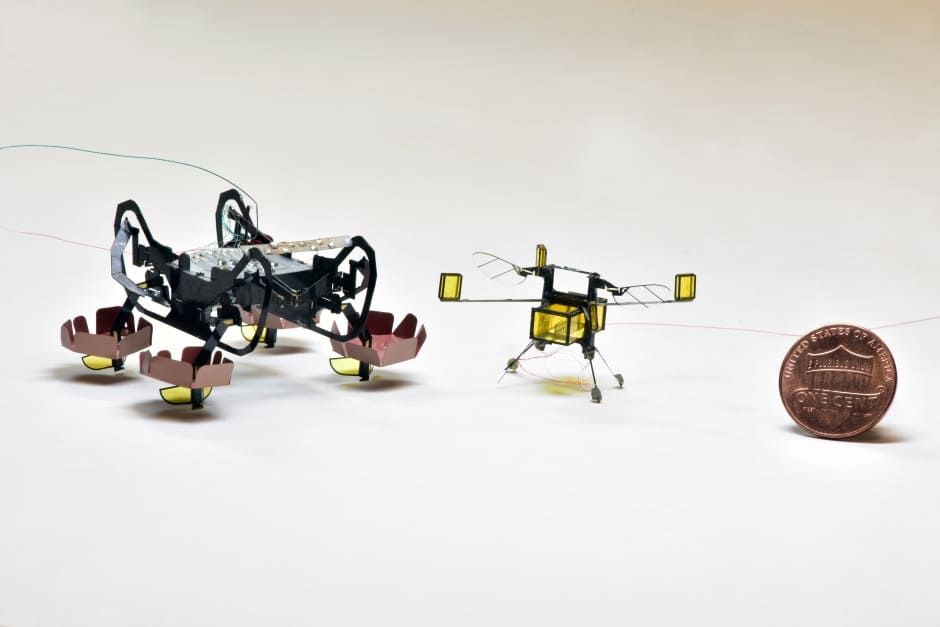
According to the group from the university’s School of Engineering and Applied Sciences (SEAS), robots able to traverse complex terrains in this way hold promise for applications in environmental monitoring and the exploration of confined spaces.
The so-called Harvard Ambulatory Microbot (HAMR) uses multifunctional foot pads that rely on surface tension and surface tension induced buoyancy when it needs to swim, but can also apply a voltage to break the water surface when it needs to sink.
This process is called electrowetting, which is the reduction of the contact angle between a material and the water surface under an applied voltage. This change of contact angle makes it easier for objects to break the water surface.
According to a paper in Nature moving on the surface of water allows a microbot to evade submerged obstacles and reduces drag. The device uses four pairs of asymmetric flaps and custom designed swimming gait to paddle on the water surface.
The Parylene-coated robot weighs 1.65g, can carry 1.44g of additional payload without sinking and paddles its legs with a frequency up to 10Hz. Once below the surface of the water, it uses the same gait to walk as it does on dry land, and is just as mobile.
Returning to dry land is a major challenge due to the water surface tension force that is twice the robot’s weight pushing down on it. The researchers overcame this by stiffening the robot’s transmission and installing soft pads to its front legs to increase payload capacity and redistribute friction during climbing. This enables it to escape the water’s hold by walking up a modest incline.
“This robot nicely illustrates some of the challenges and opportunities with small-scale robots,” said senior author Robert Wood, Charles River Professor of Engineering and Applied Sciences at SEAS.
The team now hopes to further improve HAMR’s locomotion and find a way to return to land without a ramp, perhaps incorporating gecko-inspired adhesives or impulsive jumping mechanisms.




Viking Link connects UK and Danish grids
These underwater links must, based on experience with gas pipelines, be vulnerable to sabotage by hostile powers. Excessive dependency on them could...